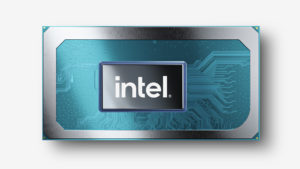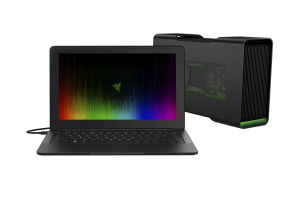Introduction
By the end of Christmas and, in some cases, even through Advent, manufacturers are starting to run teaser press releases about what technologies and products they will release or exhibit at the Consumer Electronics Show in Las Vegas.
TV technology
A major part of this year’s Consumer Electronics Show was TV and video technology.
4K ultra-high-definition TV
Every TV manufacturer ran with a flatscreen TV set capable of displaying images at the new 4K ultra-high-definition resolution. This yields an image of 3840×2160 pixels, equivalent to an image captured by an 8 megapixel digital camera.
Some of these were 84” or 110” sets which wouldn’t fit in to most peoples’ living rooms and would be out of most peoples’ price ranges. But manufacturers like Sony are launching 4K TV models at 55” and 65” screen sizes. These are exploiting the high-pixel-density trend which is encompassing display design, in a similar effect to what the Apple Retina display has brought about.
At the moment, these sets upscale standard definition and high-definition images from broadcast and other video sources. But Sony is working on a hard-disk-based media player to play content that has been turned out in this form. This is part of a 4K media distribution network that they expect to launch by the end of the Northern-Hemisphere summer.
It is also reckoned that it will take a few years for the 4K UHDTV technology to mature and manufacturers to release models at a price that most of us can afford. This is something that will typically happen with most technology.
OLED and Display technology
Another trend that LG, Samsung and Sony are working on is the OLED display for the large-screen TV set. This is something most of us would experience with an HTC or Samsung smartphone and yields a high contrast ration and very deep colours.
Sony is wanting to apply it to a 4K ultra-high-definition display, but LG and Samsung are advancing the OLED screens at the 55” HD formats. For that matter, Panasonic was also showing a 56” 4K OLED screen as a prototype. Samsung also advanced a curved 55” HD prototype along with a curved 5” prototype for handheld applications.
On the other hand, LG has demonstrated a laser projection TV setup called the HECTO. This unit can show a 100” 16:9 image with a 22” throw using a special screen and yield this as a very bright image. The projection unit has what is expected of a flat-screen TV, including an integrated TV tuner.
Smart TV technologies
The TV is now more sophisticated and smart than it ever was. This is where it is not just a display device or just to pick up broadcast content. Here, the set effectively works as a computer with an app-driven ecosystem.
Panasonic has also now become part of the Smart TV Alliance which was started off by LG and Philips. On the other hand, Google TV had gained some more traction as a platform with LG with the GA6400 and GA7900 “main viewing area” sets.
As for Samsung, they have improved their Smart Hub user-interface and shown the Evolution Kit which is an upgrade kit for most of their current-issue flat-screen TVs and the sets to be introduced over subsequent years. This will add on improved processor performance as well as access to the new user interface; and is an example of what they have done to satisfy the reality that TVs do perform many years of service even as they are “pushed down” to other viewing areas.
The software that is being driven with the Smart TV environment is primarily content searching, TV Everywhere and “second-screen” applications. It is also leading to various “virtual cable box” applications where the TV is its own cable box with the content delivered via the Internet using end-to-end content-protection / subscription-management technology.
Audio and Video Technology
NFC “Touch & Go” operation
A strong trend that is showing up this year is NFC-driven “Touch & Go” operation. Here, you touch your NFC-capable Android smartphone or tablet to the device to have it pair up and connect via Bluetooth or set up via Wi-Fi for music playback. This avoids many confusing processes to get that wireless speaker going. As far as music systems and similar products go, it would also have the unit select the “Bluetooth” or “Network Audio” source automatically.
Sony had made a “big thing” of this feature with their wireless speakers and headsets through their press conference. As well, most of the manufacturers who are running wireless speakers, music systems or home-theatre-in-box systems are integrating this function in their products.
LG has implemented this further with their newer Blu-Ray home theatre. Here, the Android device can be set to throw its display on to the connected TV screen which would come in handy for viewing videos or playing games held on this device. Similarly the Android device can be set up to work as an “earphone” for the home theatre so you can use it late at night without scrambling around for the headset jack on the TV or home theatre central unit.
AV receivers
So far, Harman have fielded two new network AV receivers for that main audio-video system. Here, they can pull in Internet radio or content from a DLNA media source and have content “thrown” to them via the home network from your computer or mobile device using DLNA or AirPlay. The AVR-2700 has 8 HDMI connections with 4K image scale-up and a 7.1 audio output with 100W per channel while the more expensive AVR-3700 adds integrated Wi-Fi wireless and has a 7.2 audio output with a more powerful 125W per channel.
Smart video peripherals
There is an increase in the number of Blu-Ray players, home-theatre units and network media players that provide smart-TV functionality without you needing a smart TV.
For example, HiSense, ASUS and TCL were intending to sell Google-TV-based network media devices while Roku was providing a small but highly-strung network media receiver. This was eve to be able to work as a full-bore cable box for one on f the cable-TV companies in the US. Netgear also launched a new range of NeoTV network media players including some that had SlingPlayer clients and one driven by the Google TV platform.
But Archos are also fielding an Android-based network media box which is also showing that the Android platform associated with a lot of the smartphones is also appearing on the TVs as a low-cost option.
4K technology
At the moment, most video peripherals that connect to the new 4K ultra-high-definition TVs will upscale the standard-definition and high-definition images to the very high resolutions offered by these sets. This is because there isn’t a common broadcast, on-demand or packaged-media distribution platform for distributing the content that is in this resolution.
Sony are using a hard-disk-based network media player with integrated BD-ROM drive, along with the content passed around on BD-ROM (Blu-Ray data) discs as a way of distributing the content. But they are working on an improved distribution method to go live by the middle of the year. As well, they said that consumer 4K will take some time to mature as equipment becomes more affordable.
Of course, Sony outlined that the 4K ultra-high-definition technology will be used in the video-production workflow, telecine (film-to-video) and video mastering applications. It is in a similar vein to the early days of digital audio recording before the arrival of the CD. This was where audio recordings were produced using at least a digital master-recording and this recording was used to turn out the records and tapes that were for public sale.
This will also involve films having their master negatives transferred to 4K video using equipment that scans the master negative at this resolution, then a 1080p scaled-down copy of this 4K master would be used for Blu-Ray distribution or HDTV broadcast. Sony also stated that they would implement the 4K production workflow into short-form video work like TV drama and commercials.
Broadcast-LAN cable TV setups
The FCC has recently laid down a pro-competition pro-consumer requirement for pay-TV providers to implement a broadcast-LAN strategy to work with most DLNA-compliant smart TVs and video peripherals. This is to drop the need to equip every TV in the house with a set-top box as is commonly the case with providing pay-TV to each set.
Intel has shown a broadcast-LAN gateway with 6 tuners and support for the DLNA content-protection requirements. This device is being positioned as being for use with Comcast’s cable-TV setups; while there are similar devices including cable boxes with this function being provided for other cable-TV systems.
Speakers and soundbars
There has been an increase in the number of wireless speakers and soundbars that are to work with Bluetooth or Wi-Fi (AirPlay / DLNA) setups.
Samsung has furthered the hybrid valve (vacuum tube) / transistor design that they used in a few wireless speakers of theirs in to their latest TV soundbar. This unit uses an accelerometer to allow it to self-adjust for lying flat or standing on its edge in respect to how it sounds and where it displays its status.
Video gaming
The console gaming market has undergone a shakeup over this year with NVIDIA and Valve fielding their TV-based gaming systems – the Shield portable and the Steam Box TV-based unit . This is alongside the Ouya Android-based TV console and a Kickstarter-funded portable showing up as Android-powered alternatives.
Here, the Steam Box would have access to the Valve Steam game store while the Shield would have access to the NVIDIA TegraZone games store alongside the Google Play app store. This is showing up to be an “uh-oh” moment for Sony, Microsoft and Nintendo who have thought of themselves in a position to “call the shots” for console gaming, especially when it comes to what titles can surface. I also suspect that this will also be a time for smaller independent studios to surface with some interesting games titles that are away from the norm.
Conclusion
Stay tuned for the next part of this series which will cover PC and home-network technology which will help in bringing the increasingly-connected home together from the CES.


